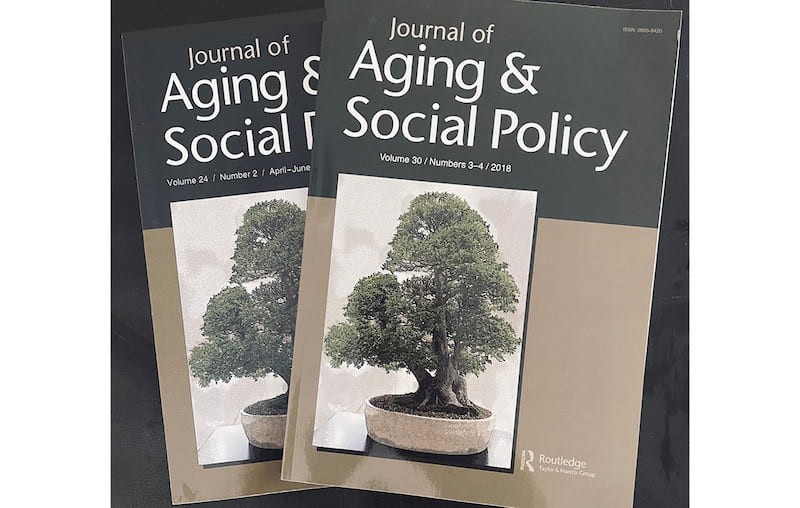The global research publisher Taylor & Francis reports that the impact factor for the Journal of Aging & Social Policy, published six times annually and based at UMass Boston since its inception in 1989, rose to a notable 7.1 in 2021, up from 2.3 in 2020. The impact factor is a measure of how often the journal’s contents are cited in other works. According to Journal Citation Reports, JASP now ranks 4th of 37 journals in the gerontology category. Separately, SCImago—which measures the scientific influence of scholarly journals both by the number of citations and by the prestige of the journals that include the citations—ranks JASP second among all gerontology journals.
“This steep rise in the rankings is remarkable and a testament to the hard work of the editorial team and supportive environment provided by the McCormack Graduate School and university administration,” says Edward Alan Miller, PhD, JASP’s editor in chief and professor and chair, Department of Gerontology at UMass Boston. “It’s an exciting development.”
The journal is also seeing a big jump in submissions from contributors across the globe. Miller says the increased levels of citations and submissions seem to be driven in part by two special issues that focused on the COVID-19 pandemic and, more generally, by its reputation for publishing high-quality research and timely commentaries with strong policy impact.
Miller thanks the journal’s Editorial Board members and reviewers for the time and expertise they give as well as the support of the team at Taylor & Francis; Managing Editor Elizabeth Simpson, a gerontology doctoral student; International Editor Michael Gusmano; and Book Editor Pam Nadash, PhD, a UMass Boston gerontology faculty member.
The department hosts a second peer-reviewed journal, Research on Aging, published by SAGE Journals and edited by Jeffrey Burr, PhD, professor of gerontology. Published eight times a year, the interdisciplinary journal reflects the expanding role of research in the field of social gerontology and also scored a notable impact factor of 2.388 in 2021.
‘Sheer determination’: JASP grows up alongside gerontology program
In 1980, Scott Bass, a young psychology and education PhD, founded a “fledgling” gerontology program at UMass Boston, as he describes it in the article, “The Origins and Evolution of the Journal of Aging and Social Policy,” co-written with Frank Caro and Miller in the June 2019 issue of JASP. in 1985, Bass successfully pitched the idea of creating a journal to Robert Morris, who had recently retired as a Brandeis University president and the past president of the Gerontological Society of America. With encouragement from Morris, Bass began building a credible academic department at UMass Boston (launched in 1988), creating a PhD program (begun in 1989), and publishing a first-rate journal uniquely focused on aging and social policy (born in 1989).
“From a policy perspective, the Journal, the Gerontology Institute, and the PhD program in Gerontology in the early years were a function of sheer determination…[It involved] seizing on opportunity, good fortune, serendipity, and talented guidance over the years.”
— from “The Origins and Evolution of the Journal of Aging and Social Policy,” by Scott Bass, Frank Caro, and Edward Miller, Journal of Aging & Social Policy, June 2019
Bass and Morris co-edited the journal until 1996, when Bass left UMass Boston for the University of Maryland Baltimore County. Caro, a member of the UMass Boston gerontology faculty, succeeded Bass. Morris continued as co-editor until his death in 2005. Caro continued as JASP’s editor for 20 years, a time marked by developing the journal’s global reach and a number of special themed issues. In 2016, Miller—a UMass Boston gerontology professor and long-time journal contributor and reviewer—succeeded Caro.
Miller has worked since then to strengthen JASP’s visibility and impact by growing the number and quality of submissions, raising citations, and enhancing media coverage. To those ends, he has expanded the editorial board; continued to publish special themed issues; and broadened the type and length of submissions accepted beyond research articles and commentaries to include guest editorials, brief reports, and research syntheses.
“It is deeply gratifying to see how far the reach of the journal has grown,” he says.


2 Pingbacks